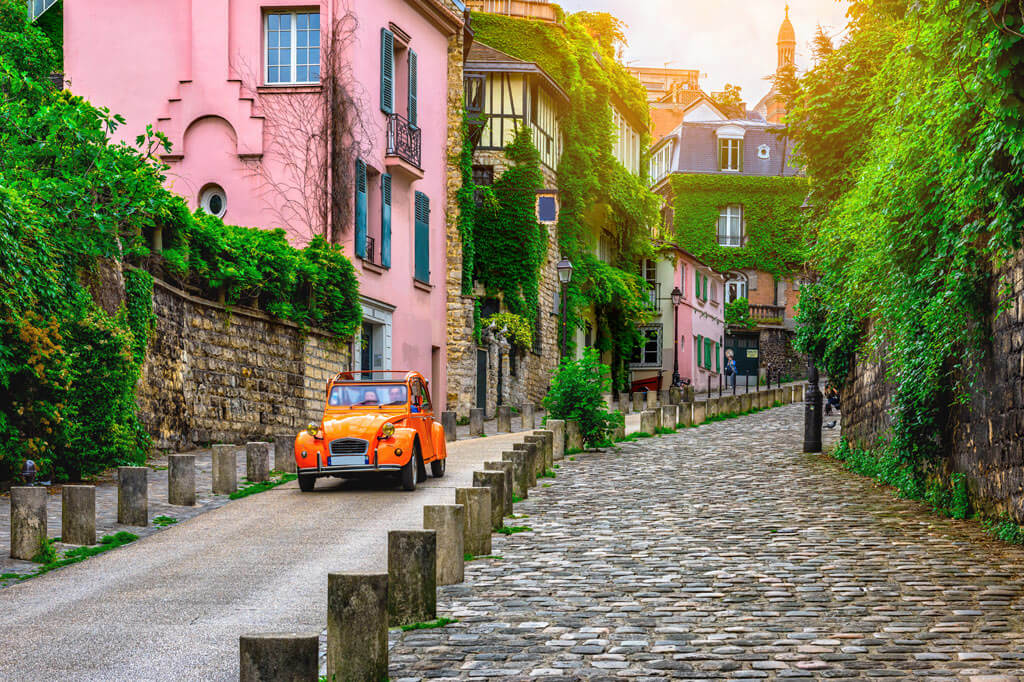In many aspects, Montmartre, Paris, is still a neighborhood stepped back in time. This charming village was annexed to the French Capital only in 1860.
Previously, in the 18th century, Montmartre was a holiday resort for the wealthy bourgeois. Then it became the epicenter for new Bohemian artists until the beginning of the twentieth century.
While the Haut de Butte (upper Montmartre) remained quite rural, the Bas Montmartre (lower Montmartre) unleashed the crazy interloped nights of the most famous Parisian cabarets.
Now entirely devoted to the entertainment of tourists, Montmartre has nevertheless managed to maintain a certain authenticity thanks to the preservation of its village buildings and some traditions and festivals.
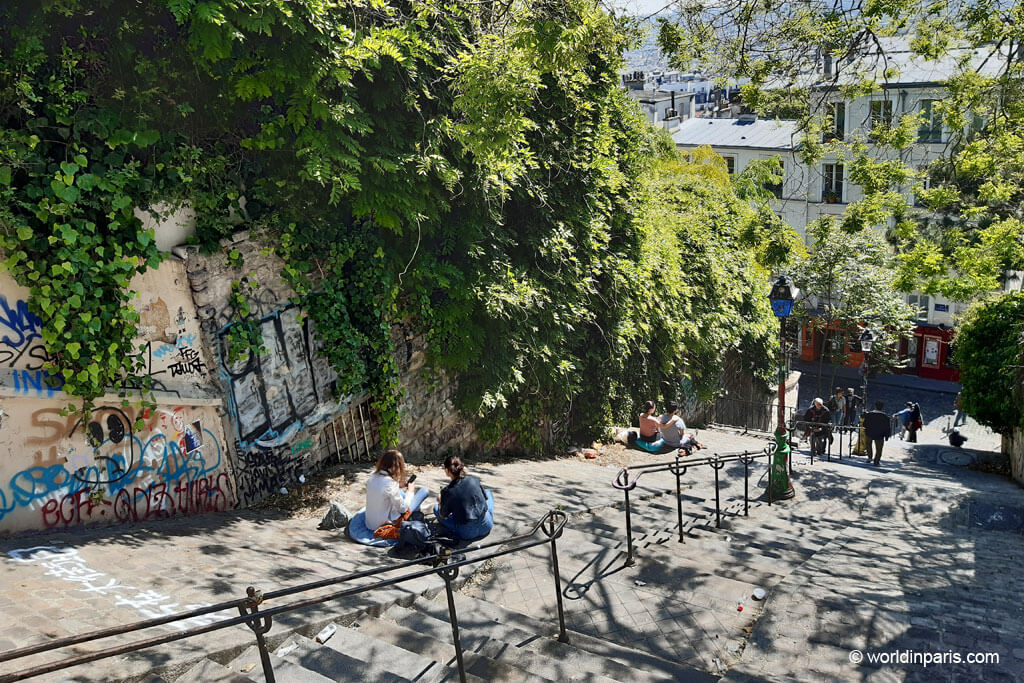
If you visit Paris Montmartre for the first time, our self-guided Stories of Old Montmartre Walking Tour is a good start. But to fully appreciate the Butte (the ‘hill’ for the locals), go off the beaten path. Below, our Secret map of Montmartre Paris, with our favorite places to see in Montmartre and some Montmartre hidden gems to truly discover the soul of this iconic neighborhood in Paris.
Montmartre Practical Information
How to Get to Montmartre, Paris?
Two metro lines operate within Montmartre, lines 12 (green) and 2 (blue).
Montmartre is a hilly neighborhood with many staircases and cobbled streets. If you want to get to Montmartre from the airport and have a lot of luggage, we recommend booking a private, door-to-door transfer service like Welcome Pickups.
Where to Eat & Sleep in Paris Montmartre?
Our Secret Montmartre Map
Visit some beautiful hidden gems in Montmartre with the help of this secret Montmartre map. This Montmartre Paris map is not a walking tour of Montmartre, but the points on the map are listed to optimize walking distances.
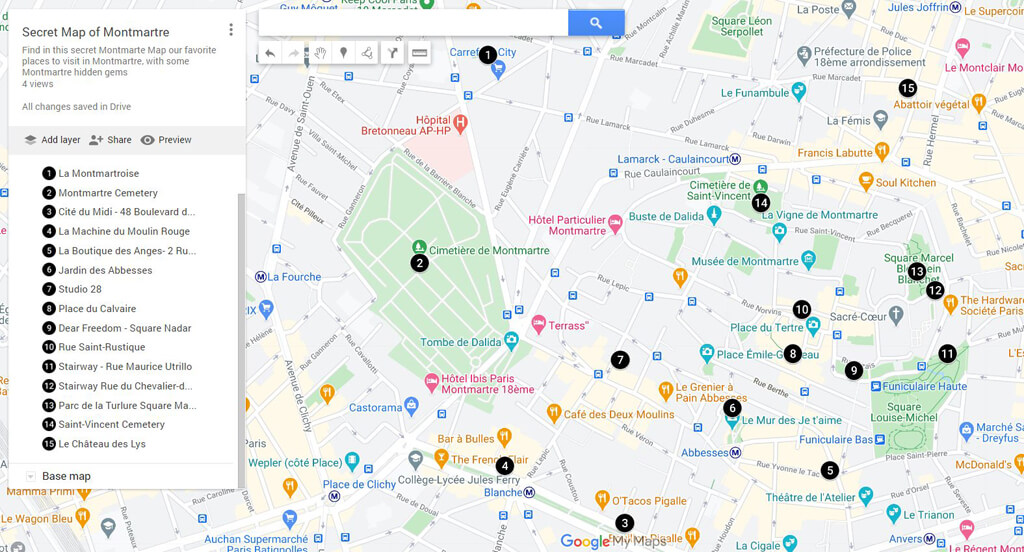
1. La Montmartroise
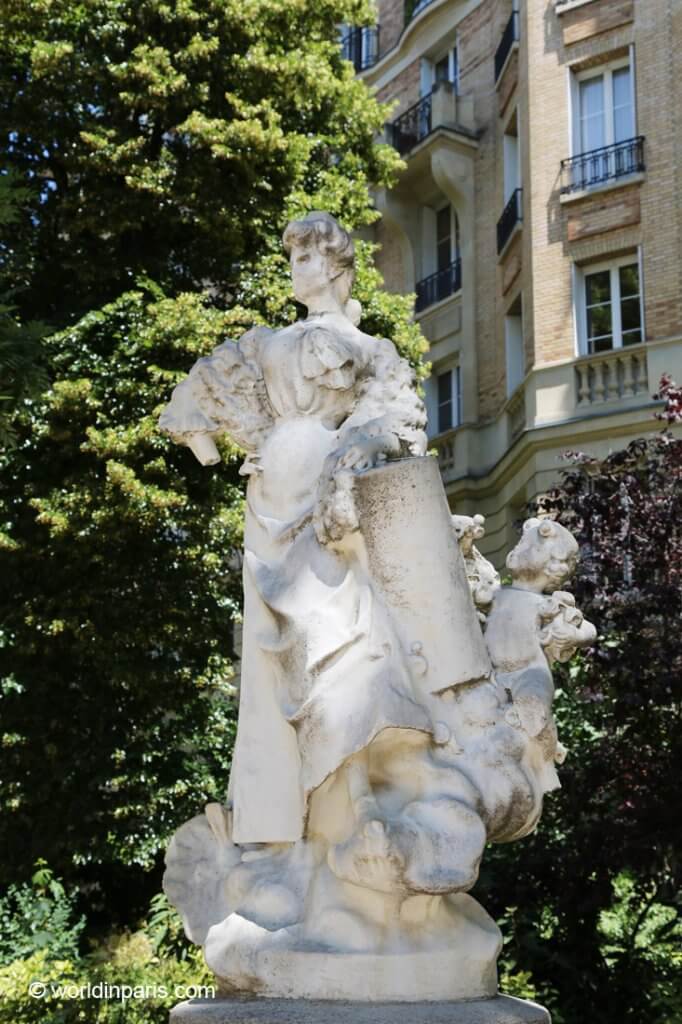
The first point of this map of Montmartre is La Montmartroise, in Square Carpeaux. This is a statue by Théophile Camel (1863-1911), an artist of the Butte Montmartre who was largely inspired in his work by anonymous people who crossed in the street.
The Montmartroise is one of those allegorical figures of popular Paris set up across the city at the start of the 20th century, before the First World War. Dressed in the fashion of the 1900s, with a simple hairstyle, a marked waist, and stole on the shoulders, La Montmartroise is the kind of young lady that we could meet in the Montmartre of the 1900s.
In the sculpture’s composition, we can see some symbols of the neighborhood like a drum, a mill half-erased by time, a painter’s palette, and its brushes.
2. Eternal Locals
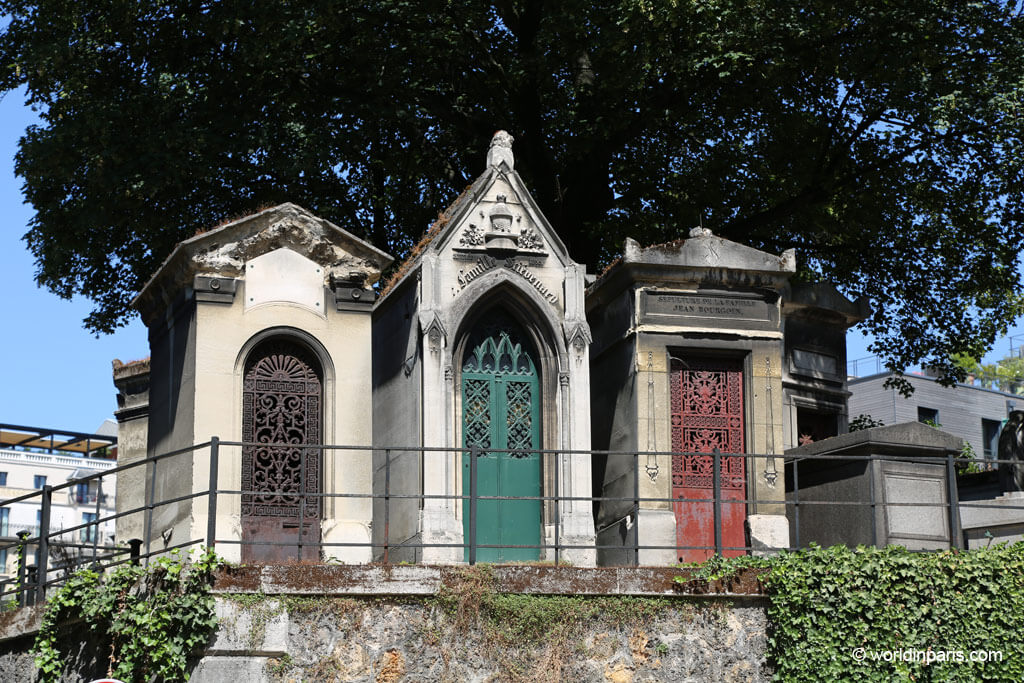
The Montmartre Cemetery (20 Avenue Rachel) is the third biggest cemetery in Paris, after Père Lachaise and Montparnasse cemeteries. It opened its doors in 1825, and it looks pretty much like Père Lachaise but with the particularity of being crossed by the metallic bridge of Caulaincourt, built in 1888.
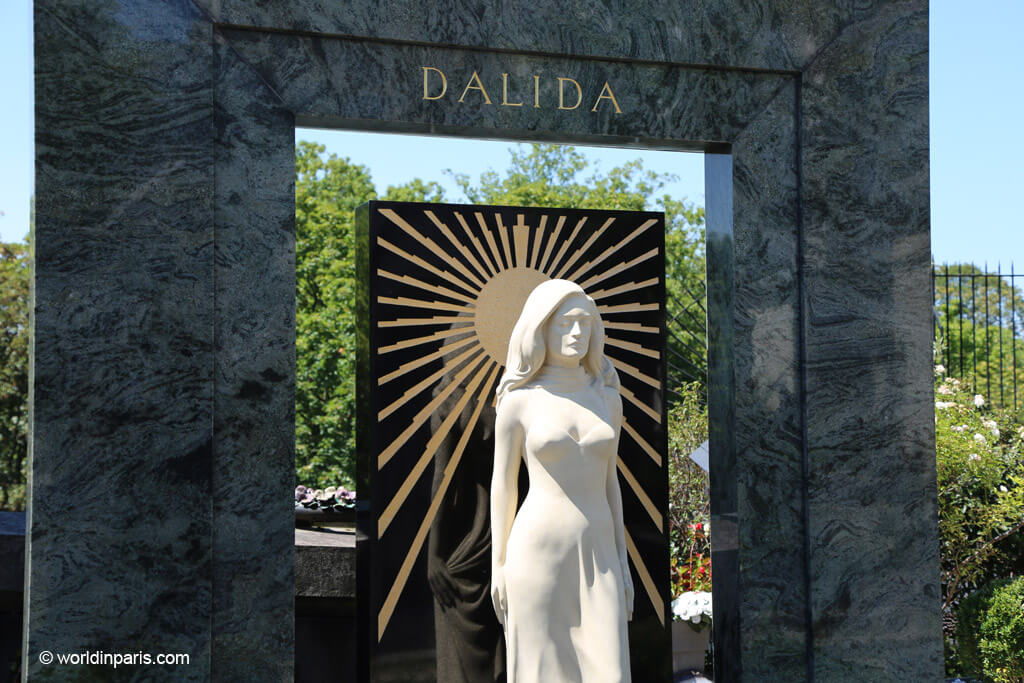
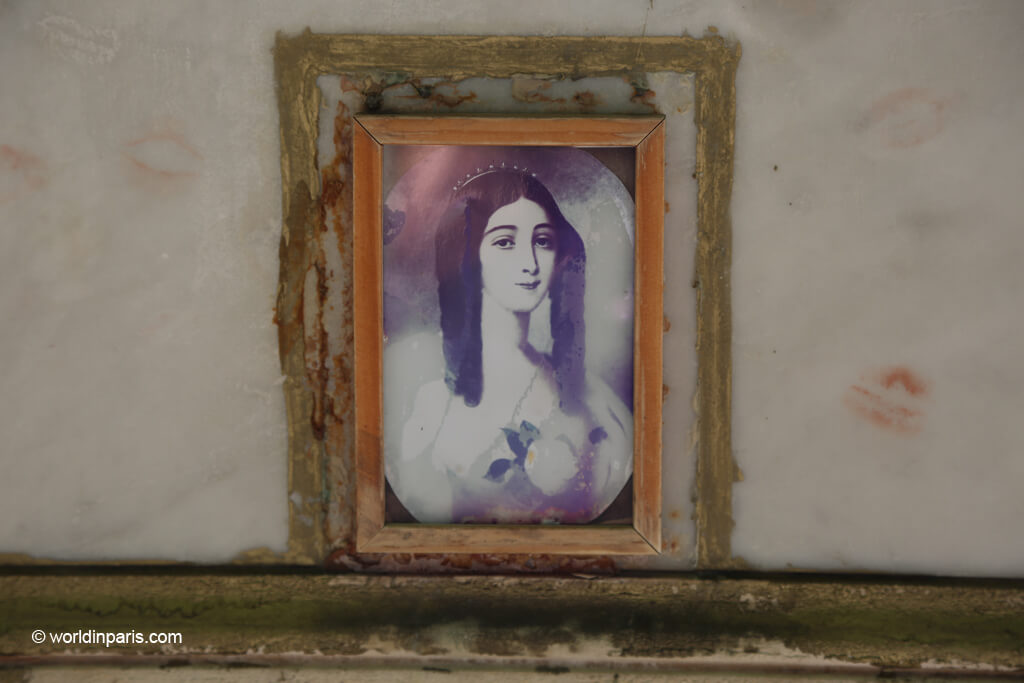
Montmartre’s cemetery definitely has a much more local feeling than the Père Lachaise, with many trees (maple, chestnut, lime, and cedar trees) and a few tourists. Some world celebrities and Montmartre artists chose to rest forever in this neighborhood particularly dear to them and today you can pay your respects to people like the singer Dalida, Alexandre Dumas (son), Degas, Stendhal, François Truffaut, Rose Alphonsine Plessis (la Dame aux Camélias), or La Goulue (cabaret dancer and model for Toulouse Lautrec).
3. Mediterranean Colors in Montmartre
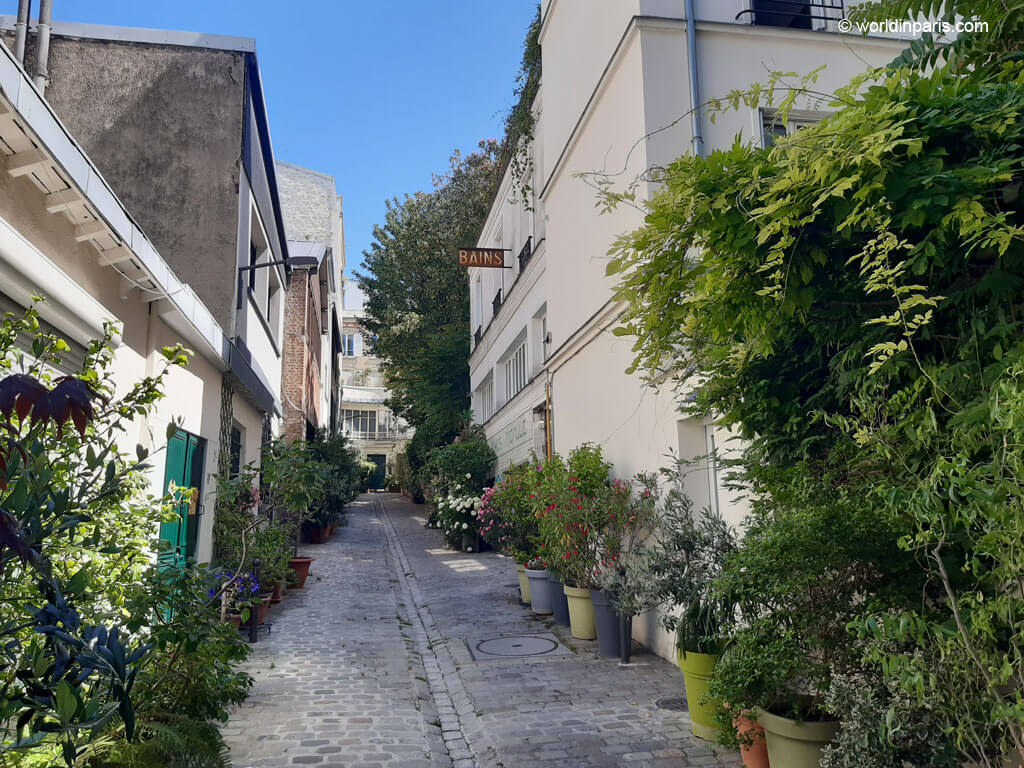
There are still many secret spots, hidden gems in Montmartre; you just need to know where to look. Now we are in Pigalle, along the busy Boulevard de Clichy with its gloomy souvenir shops, neon lights, sex shops, and surrounded by a constant stream of tourists and dubious fauna attracted by naughty establishments.
On number 48, the boulevard opens up on a pretty Parisian street named the Cité du Midi, a verdant dead end only a few meters long.
The Cité du Midi is a picturesque street – barely discernible from the boulevard –, the succession of a few old houses in pastel colors, workshops, and an abundance of plants. It is also home to the former Baths of Pigalle.
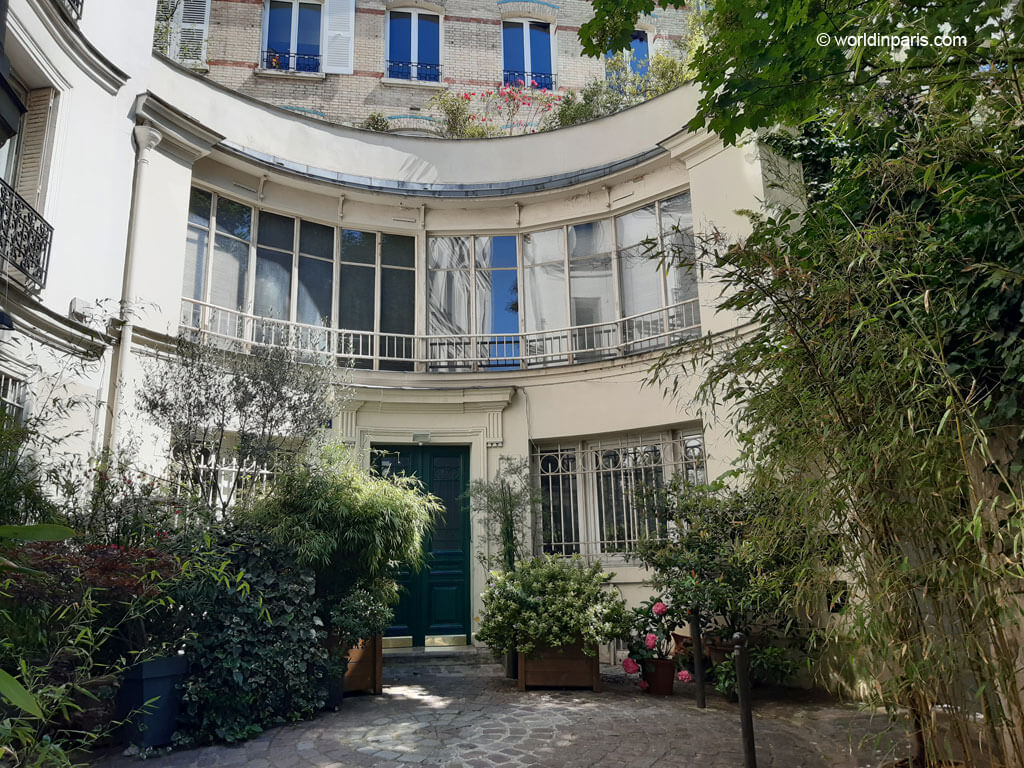
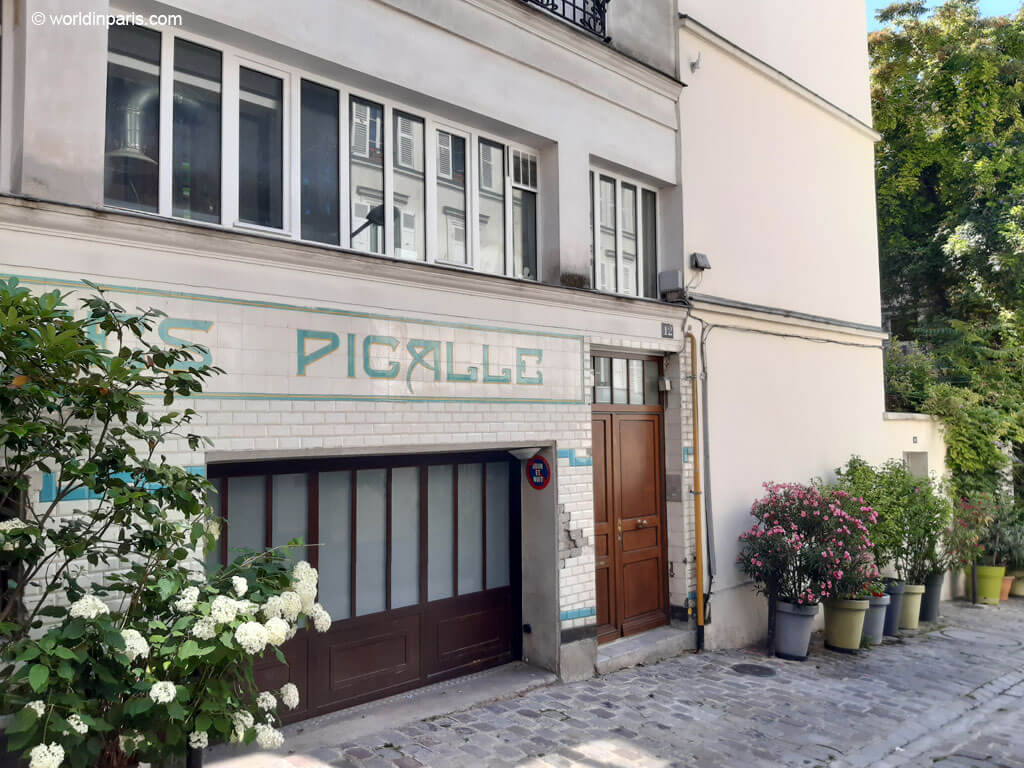
La Cité du Midi is a beautiful reminiscent of the south of France and a bubble of peace in the crazy Bas de Montmartre.
4. The Locals’ Backstage
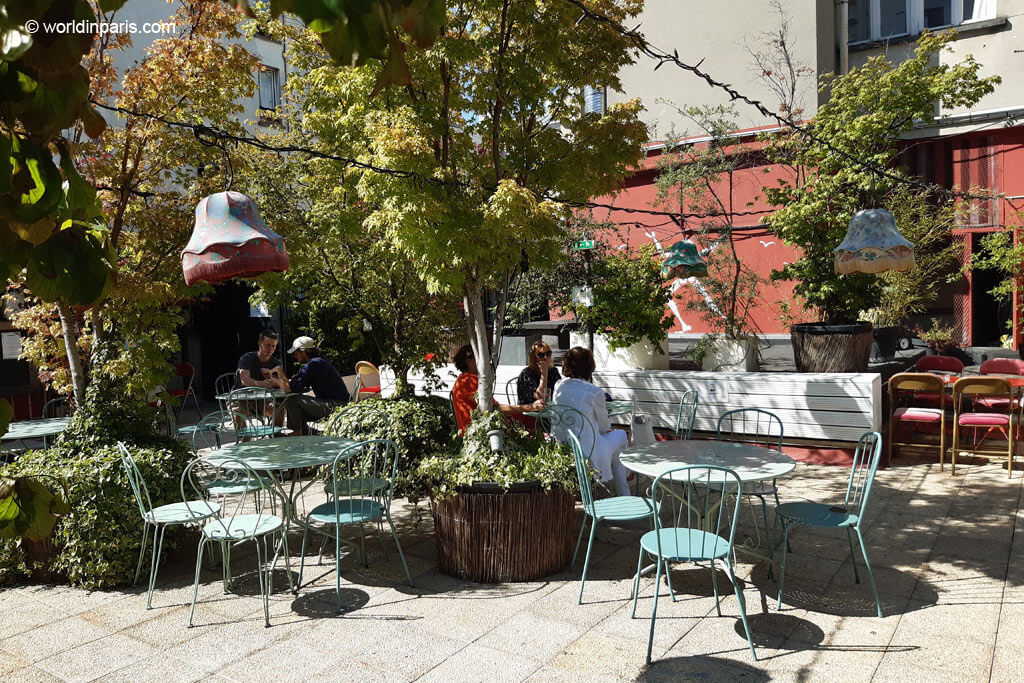
Pigalle is also the headquarters of the iconic cabaret Moulin Rouge, featuring the famous cancan dance and more. Hidden behind its wings, there’s the Bar à Bulles (4bis Cité Veron), a timeless place nestled in the Cité Veron perfect for a cold tea in a warm afternoon of June.
A true Parisian lull, this rooftop bar-terrace is populated with Japanese maples and plunges us into an intimate bubble of peace all year round. On weekends, don’t miss their fantastic brunch served on the terrace or inside the bar.
5. La Boutique des Anges
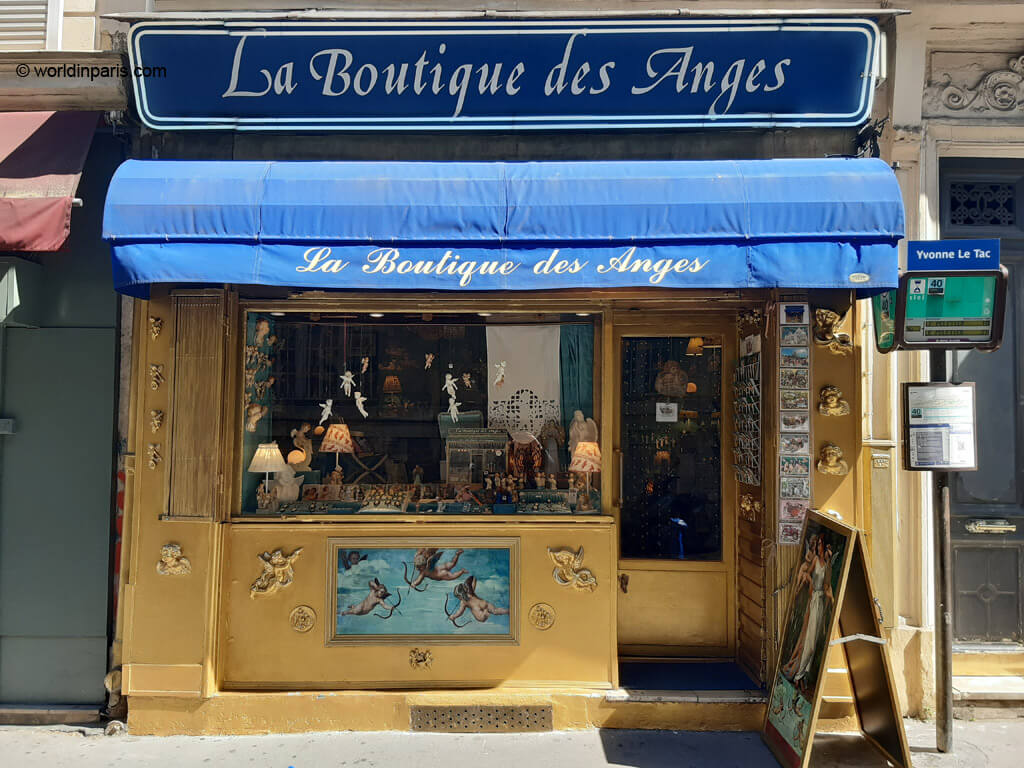
If you are following the points of this Secret Montmartre map, now it is time to climb the Butte. Montmartre is the kind of place where locals can still find small bookshops, thrift shops, and cute gift shops. Here, even the angels have their own address; La Boutique des Anges shop is entirely dedicated to them!
Jewelry, home accessories, lamps, trinkets, cards, bookstore, candles, and even hand-made creations, fall for this little paradise on earth. Address: 2 rue Yvonne le Tac.
6. Medieval Remains and Medicinal Plants
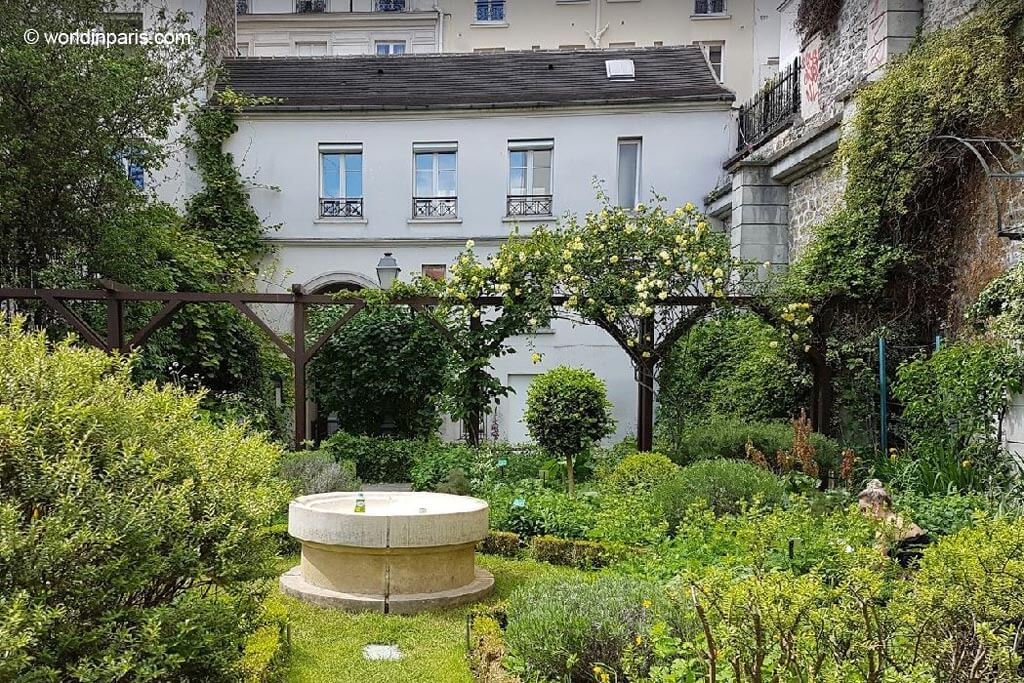
The Jardin des Abbesses (10, Place des Abbesses) is one of the most secret places to see in Montmartre, often protected by a padlocked gate.
In medieval times, this site was occupied by an abbey of nuns (hence the name) who inhabited this place until the French Revolution when the abbey was destroyed, and the last abbess ended up under the guillotine. The old woman, deaf and blind, was condemned for having conspired ‘secretly and blindly.’ Not bad, right?
The garden tries to recreate the atmosphere of a medieval cloister, with a well in the center and surrounded by medicinal plants, well known for their healing properties.
Access to this garden is often restricted, and you need to be very lucky to find it open when you pass by, but it is worth a try!
7. Le Studio 28
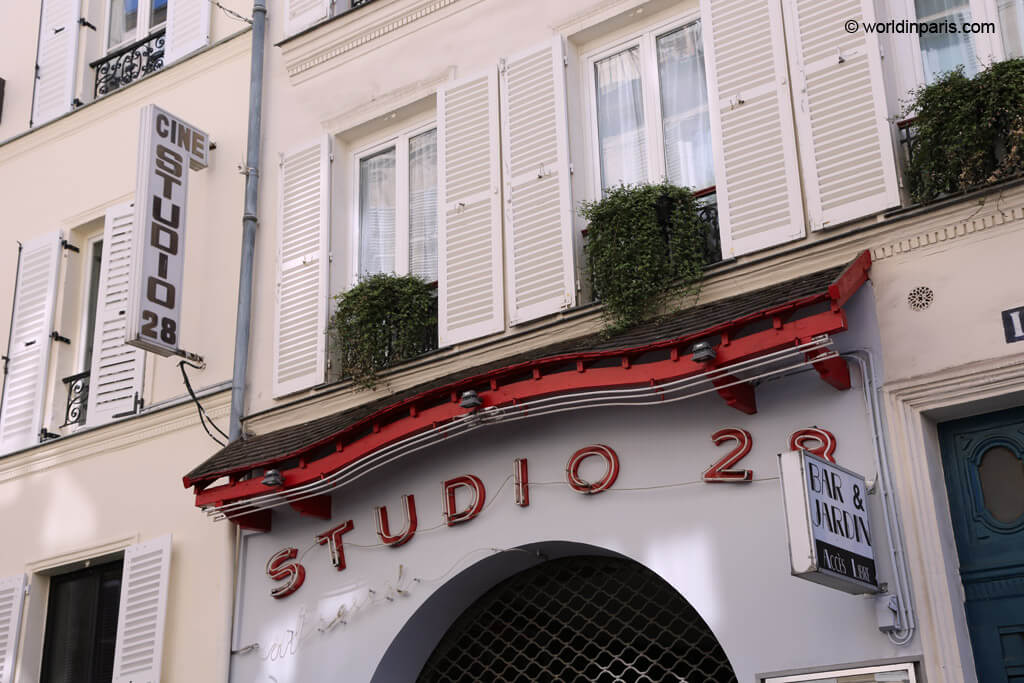
Described by Jean Cocteau as the ‘cinema of masterpieces, and the masterpiece of cinemas,’ Le Studio 28 opened in 1928 as Paris’ first avant-garde cinema, and it was a favorite meeting place of surrealists like Luis Buñuel, Salvador Dalí, Abel Gance, and Jean Cocteau.
Classified ‘Art & Essay,’ this neighborhood cinema is the oldest Parisian cinema still in operation, which offers a mix of independent and big-budget European and American films today.
Run by the family Roulleau since 1948, its owners haven’t stopped to entertain and innovate. They started programming different films in the same week and proposed a preview every Tuesday, which welcomed the biggest cinema stars over the years. In 1969 Le Studio 28 was the first to create a loyalty card.
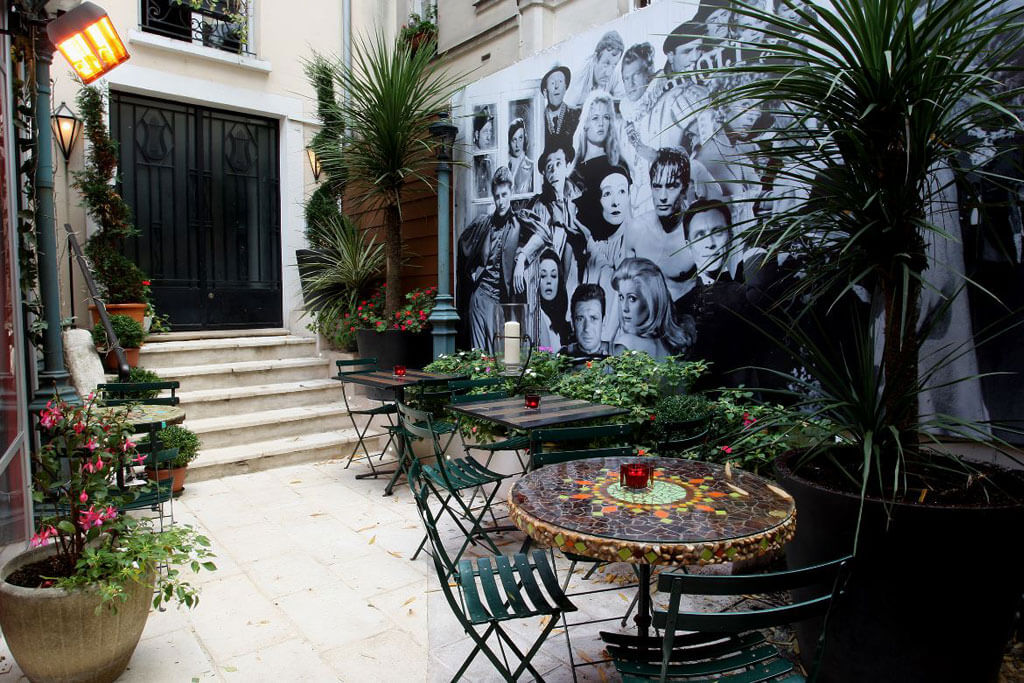
Studio 28 is more than a cinema; it’s a real place of life in Montmartre. There’s also a bar and a winter garden for drinks (with or without the movies). Address: 10 Rue Tholozé
8. Chez Plumeau
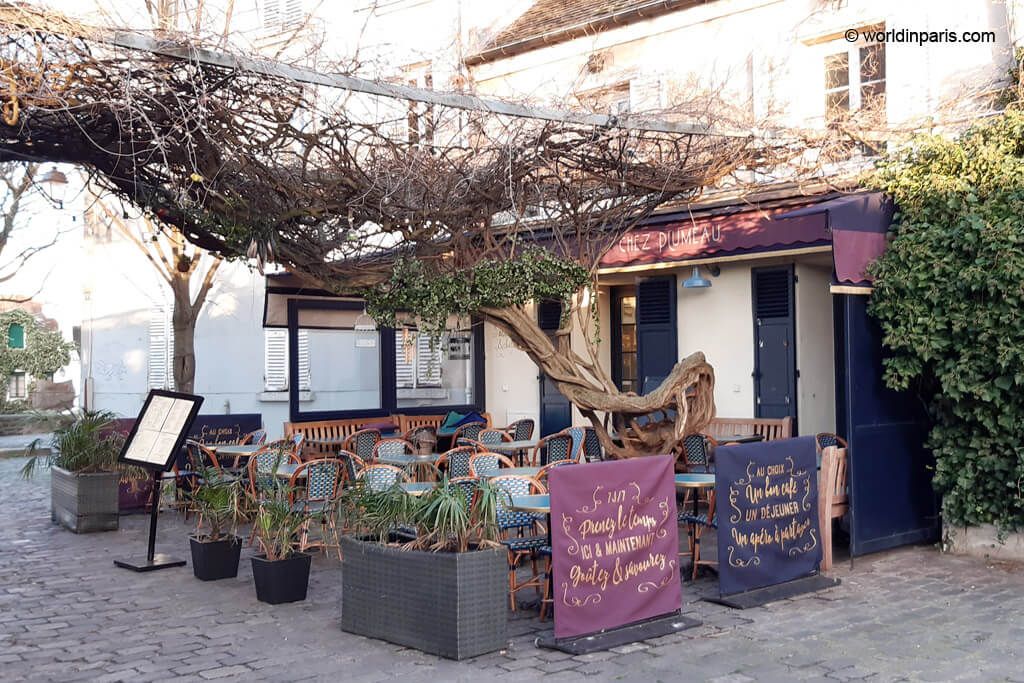
The bistro Chez Plumeau is located on Place du Calvaire, a stone’s throw from Espace Dalí and a bit away from the perpetual hustle and bustle of Montmartre.
Place du Calvaire is a pretty square, quiet, picturesque, and with a great view of the Eiffel Tower. The stairway – rue du Calvaire is very picturesque too.
Chez Plumeau replaced the former Auberge du Coucou, a famous cabaret much loved by the Montmartre artists in the 1950s. Today it offers decent French food and one of the most beautiful terraces in Montmartre.
Have lunch or just a drink in the shade of a graceful hundred-year-old wisteria. This terrace is delightful in the summer but also in winter when it is covered and heated. Inside, old stones, light brown paneling, and dark wood furniture give the place a warm Savoyard chalet atmosphere.
UPDATE: the centenary wisteria was cut : -((
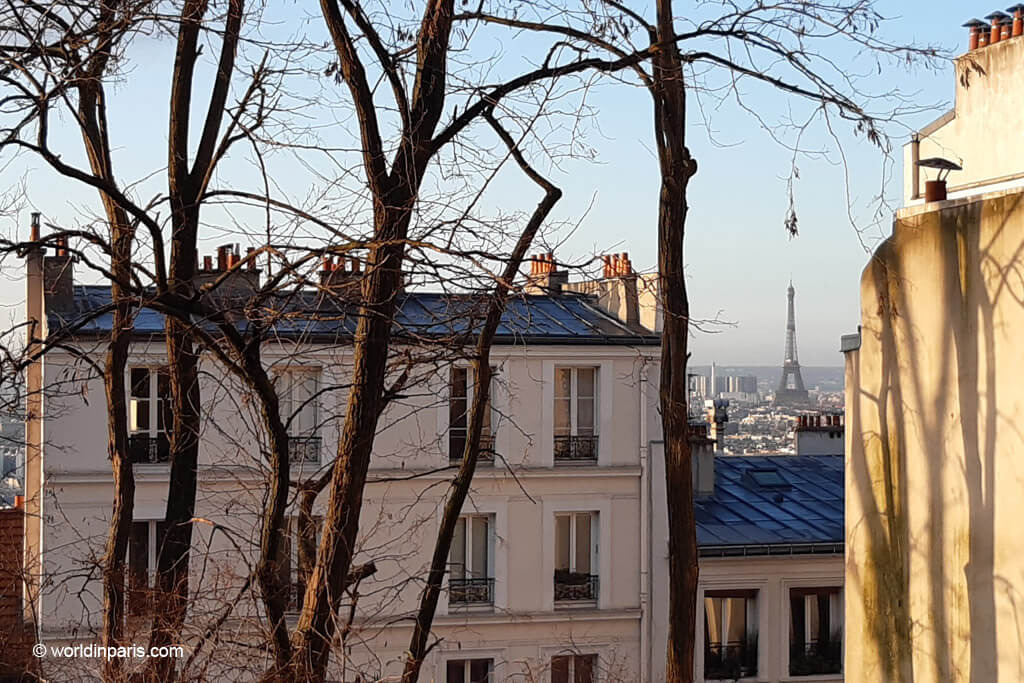
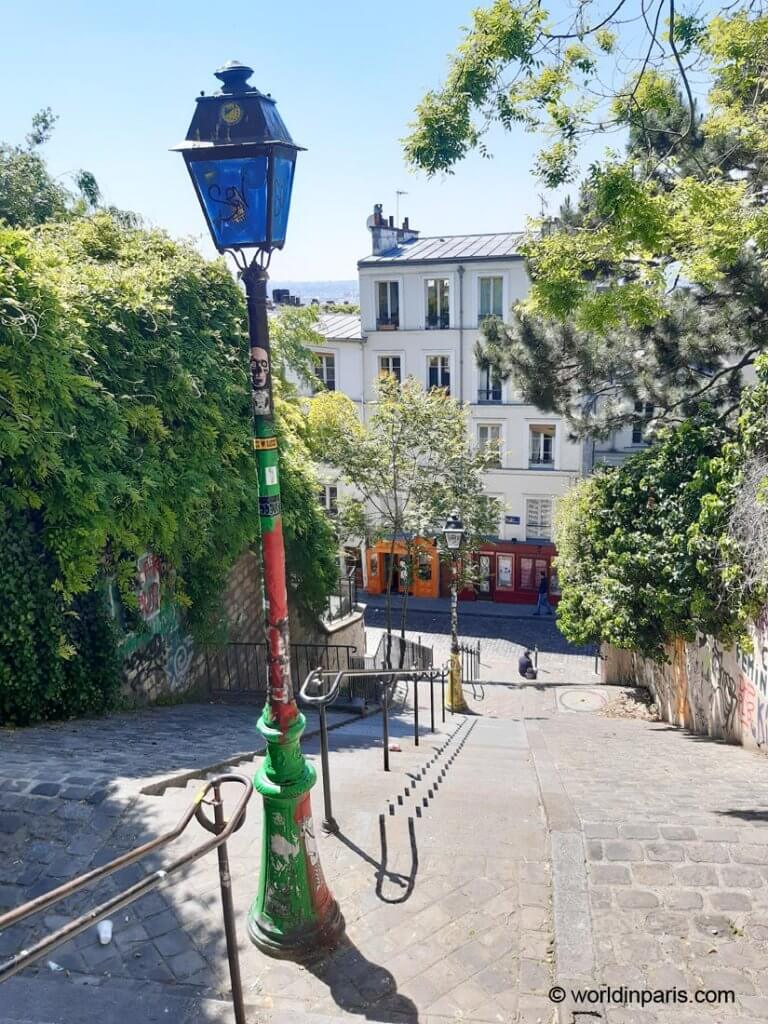
9. Dear Freedom
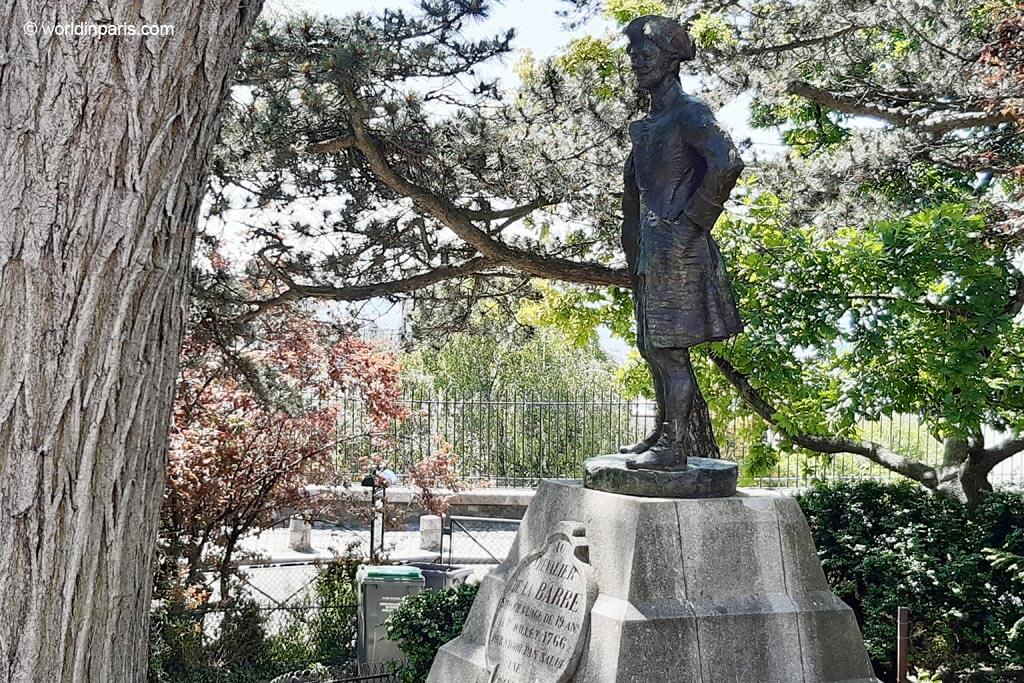
The Square Nadar pays homage to the photographer Félix Tournachon (1820-1910), nicknamed Nadar, pioneer of photography in France and the world. This is a quiet, beautiful square, the seat of one of Montmartre’s reservoirs built in the Neo-Byzantine style of the Sacré-Coeur. There are sophoras, oaks, and trees from Judea too.
The statue on the square represents the knight Jean-François de la Barre, a native of Abbeville near Amiens. The knight was very interested in the philosophy of Voltaire and the Enlightenment in general and frequented the anti-religious and protest circles of Abbeville. The Chevalier de la Barre was beheaded and burned in 1766 for refusing to take off his hat when a religious procession passed.
There’s a long story behind this process which would deserve a whole article that involves Voltaire and a country amid the war against the Enlightenment philosophers and the Encyclopedists. However, everybody agrees on the disproportion between the offense and the punishment executed.
Poor Chevalier de la Barre had to wait until the French Revolution to see his memory rehabilitated. Today, many streets and statues in France bear in mind this tragic judicial episode. The statue at Square Nadar represents him looking towards the Sacré-Cœur Basilica. And, of course, he has his hat on…
10. The Oldest Street of Montmartre
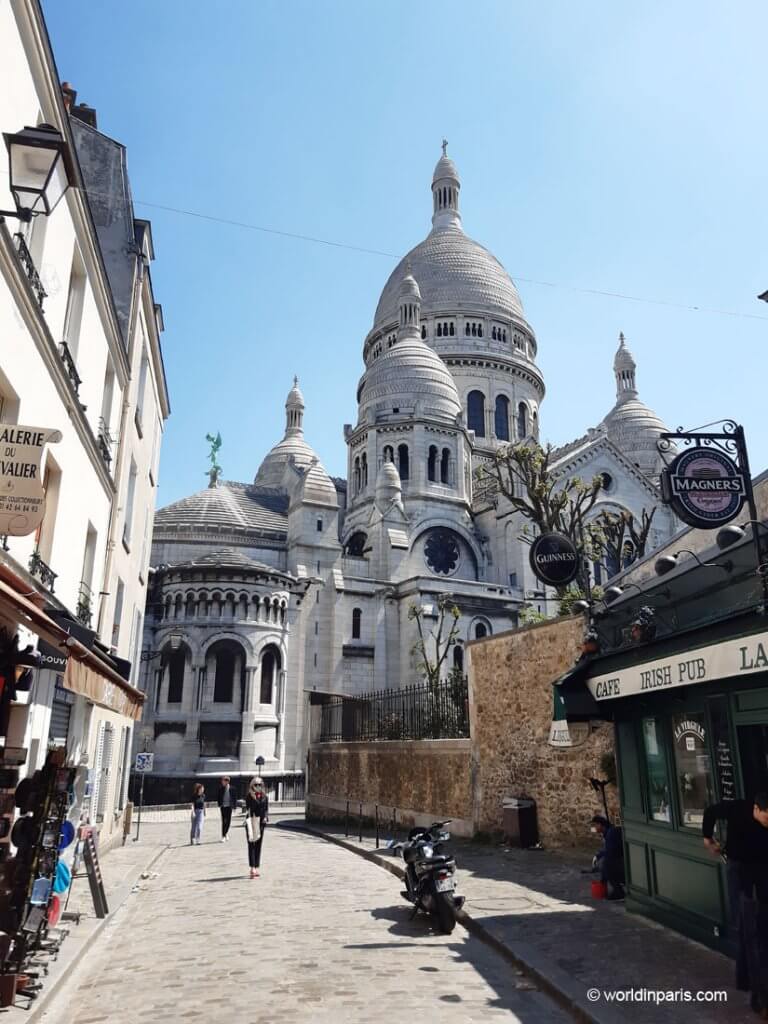
Rue Saint Rustique is the highest point on this map of Montmartre Paris. Rue Saint Rustique is not only remarkable for its beauty, but it is also the oldest street on the Butte! The street has existed since the Middle Ages, although at that time it was only a simple dirt road, marking the border between the seigneuries of Saint-Denis and Montmartre.
Immortalized by many artists, Rue Saint Rustique remains one of the most picturesque and authentic Montmartre streets, with a fantastic view over the Sacré Coeur. Despite being in the heart of Montmartre, parallel to busy Rue Norvins, this is the kind of quiet street that locals take to avoid the herds of tourists.
Rue Saint Rustique – 110 m long and 2.60 m wide – was the first street in Paris to officially become a pedestrian street in 1973.
On 18 Rue Saint Rustique, we find La Bonne Franquette. Formerly known as Aux Billards en Bois, the establishment was the meeting place for the Impressionists. Its garden served as a model for Van Gogh for his painting ‘La Guinguette,’ exhibited at the Louvre Museum. It is said that Charles Aznavour lived in the building, in a small apartment on the first floor.
11. Rue Maurice Utrillo
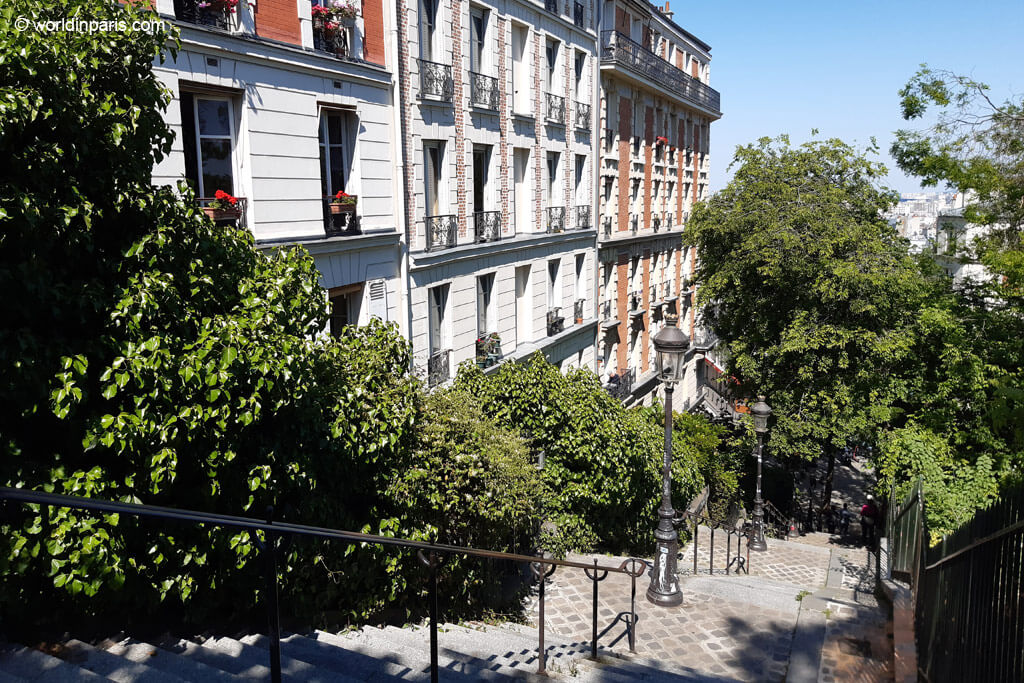
Rue Maurice Utrillo is our favorite stairway-street in Paris, with its colored houses and its great perspective of the Sacré Coeur, perched right above it.
In 1963, this stairway street, previously part of Rue Muller, took the name of the painter Maurice Utrillo, who illustrated Montmartre (and this street) so well.
At the foot of the stairway, rue Paul Albert, there’s l’Eté en Pente Douce, a restaurant with a lively terrace perfect for eating outside when the weather is nice. This restaurant replaced a 19th-century boulangerie, and it has kept the original painted glass ceilings.
At the top of the stairway, there was a popular restaurant – La Savoyarde – from which Maurice Utrillo painted different perspectives of this street that later will bear his name.
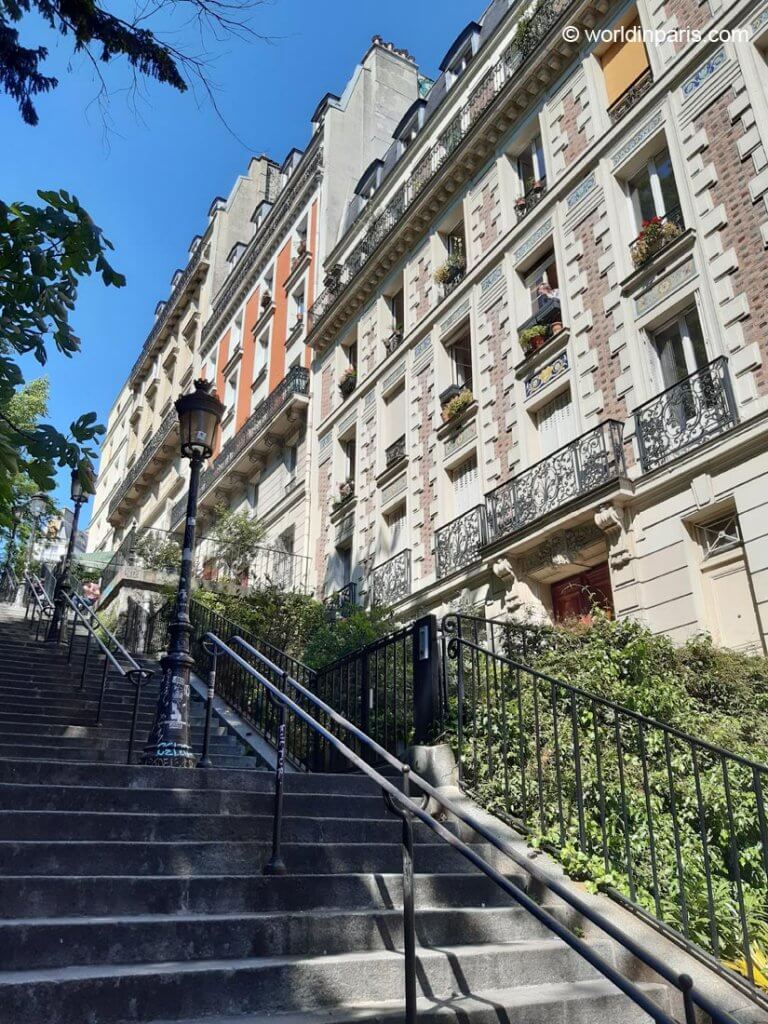
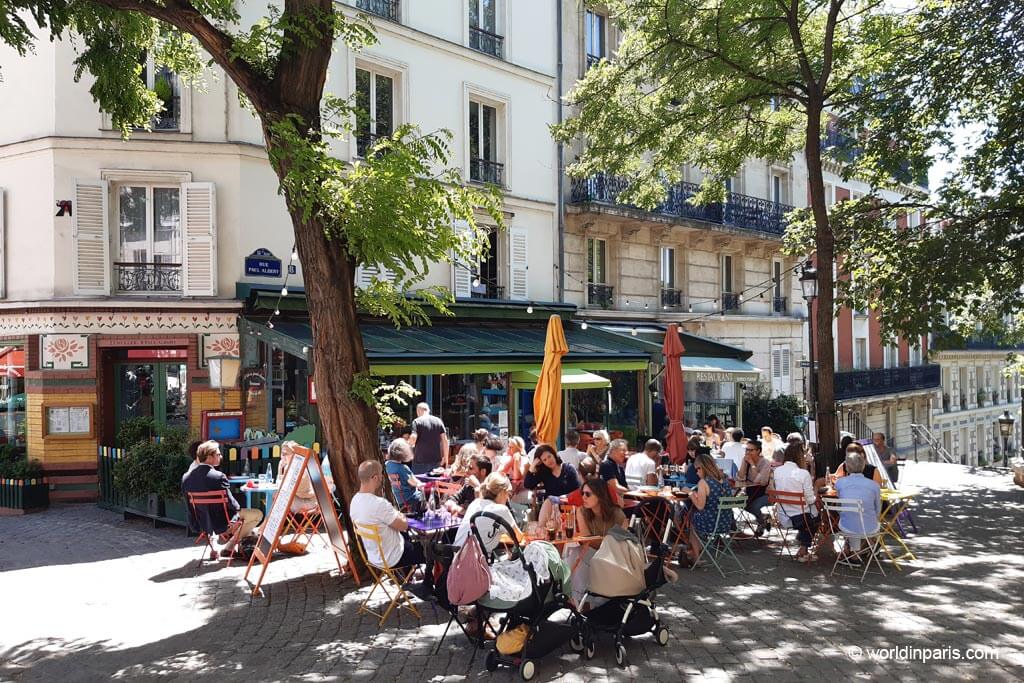
Rue Utrillo ends there. You just have to cross rue Lamarck, climb a final staircase, and reach the parvis of the Basilica, from where you will discover the swell of the roofs of Paris.
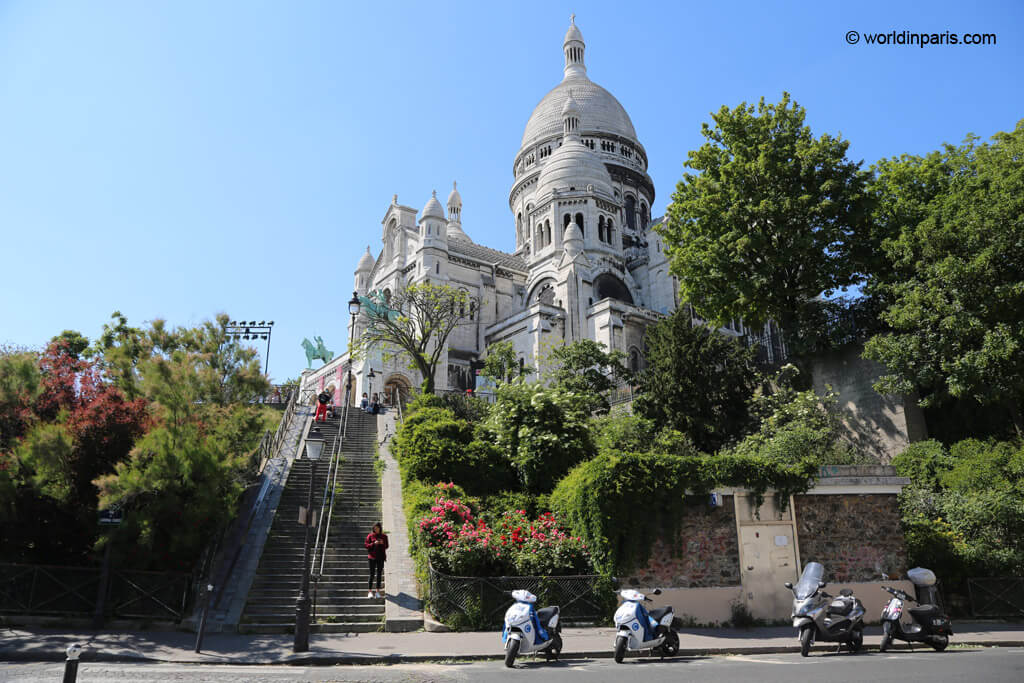
12. Montmartre’s Milky Way
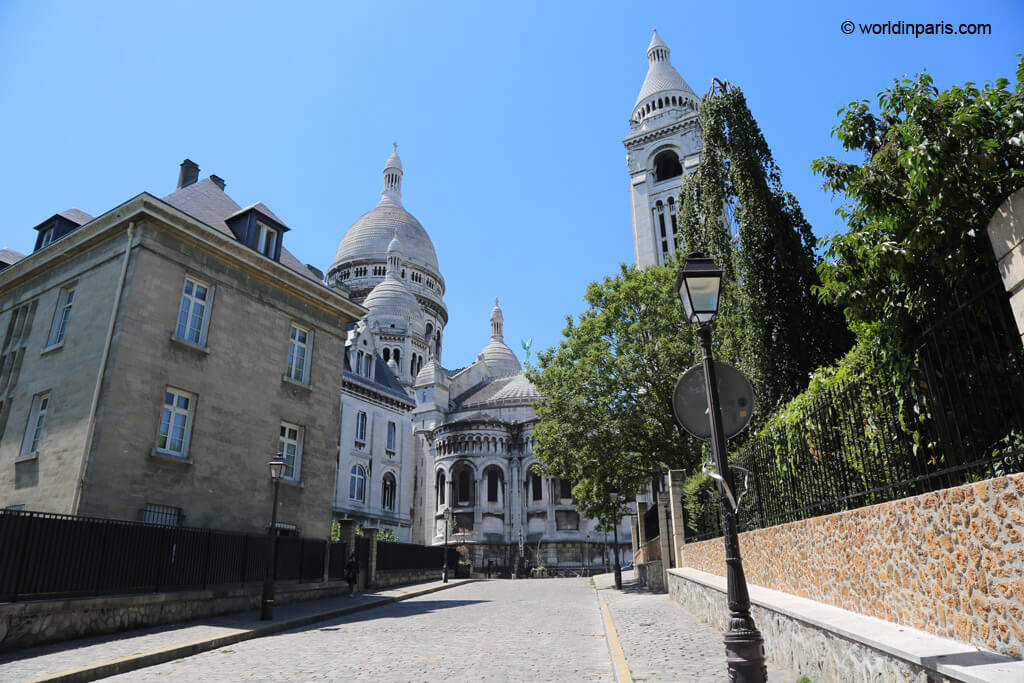
‘I can never decide whether Paris is more beautiful by day or by night…’ says Marion Cotillard, while descending the stairway on Rue de Chevalier de la Barre, in Woody Allen’s movie ‘Midnight in Paris.’
The truth is that Paris is beautiful at all times, but at night, Paris can also be magical.
The stairway on Rue du Chevalier de la Barre offers a great perspective of the Sacré Coeur, perched right above it. But the stairway’s most fascinating secret comes to light after dark.
Each evening, as night falls, the stairway gets illuminated by hundreds of blue and white stars (little light spots), engraved in the slope of the hill. The left side represents the star constellations seen in the Parisian sky on January 1st. The right side portrays the position of the stars, as seen on July 1st.
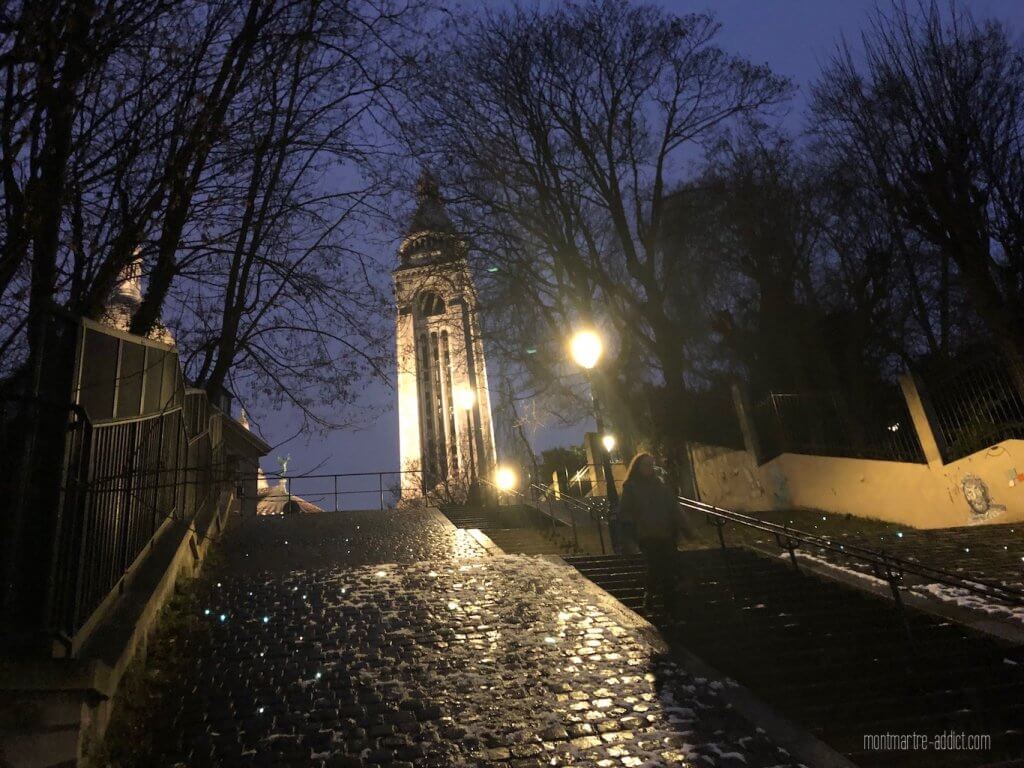
The creator of this ‘milky way’ is the cinematographer and Montmartrois Henri Alekan – who did not choose the location by chance: ‘When you look at the Rue du Chevalier de la Barre from below, you see the starry slopes, inclined at thirty degrees. Your gaze is then inevitably brought up. You take in the dome of The Sacré Coeur, and, ultimately, your eyes reach the sky. Then they slowly ebb back to the ground and to the stairway, which in turn, becomes heaven’.
Don’t miss your chance to walk ‘between heaven and sky’ during one of the warm summer nights in Paris Montmartre.
13. A Picnic with a View
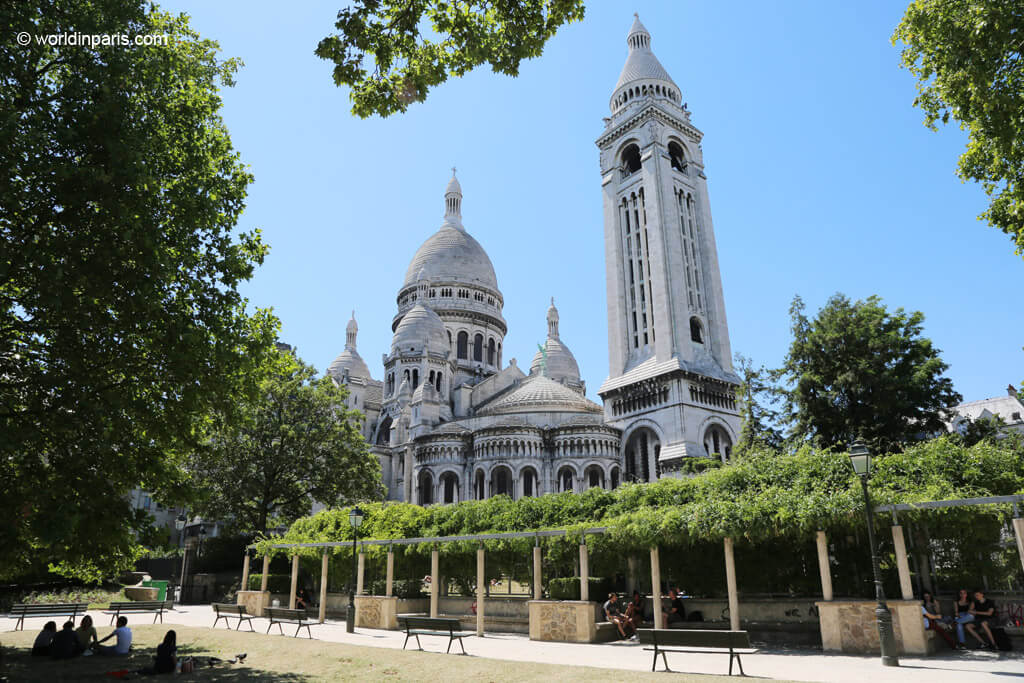
If you are following the points of our Secret Montmartre map, here’s the perfect chance for a break. The quiet Parc de la Turlure is one of the locals’ favorite green spaces in Montmartre, offering its visitors a breathtaking view of the Sacré Coeur and the Montmartre district. It is located at the corner of rue de la Bonne and rue du Chevalier de la Barre, and it is one of the best spots for a picnic in Paris with a view.
The name comes from that of the 13th windmill of Montmartre, le moulin de la Turlure, built in 1770. The windmill was mined by quarrying – this was the fate of many mills in Montmartre, weakened by quarries when they did not swallow them up – and it was finally destroyed in 1827.
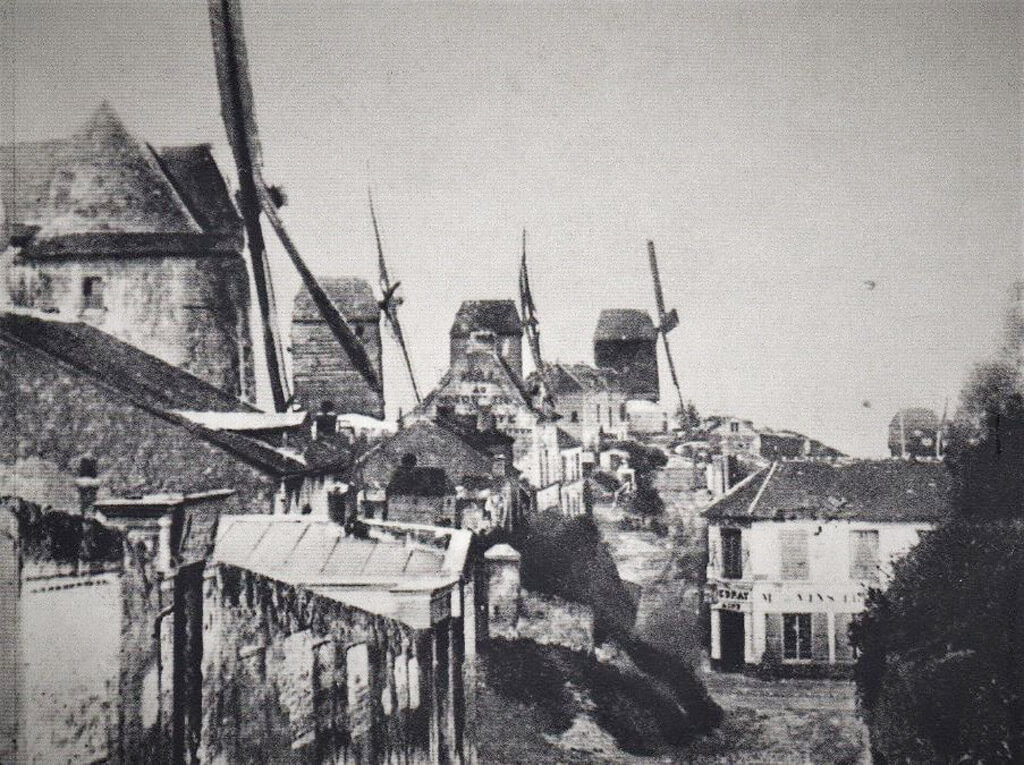
Then, between 1853 and 1860, the site was occupied by a guinguette called the Solferino tower.
The park is officially called Square Bleustein-Blanchet (that’s the name that you will find on maps and GPS), but the locals still talk about the Parc de la Turlure.
14. Saint-Vincent Cemetery
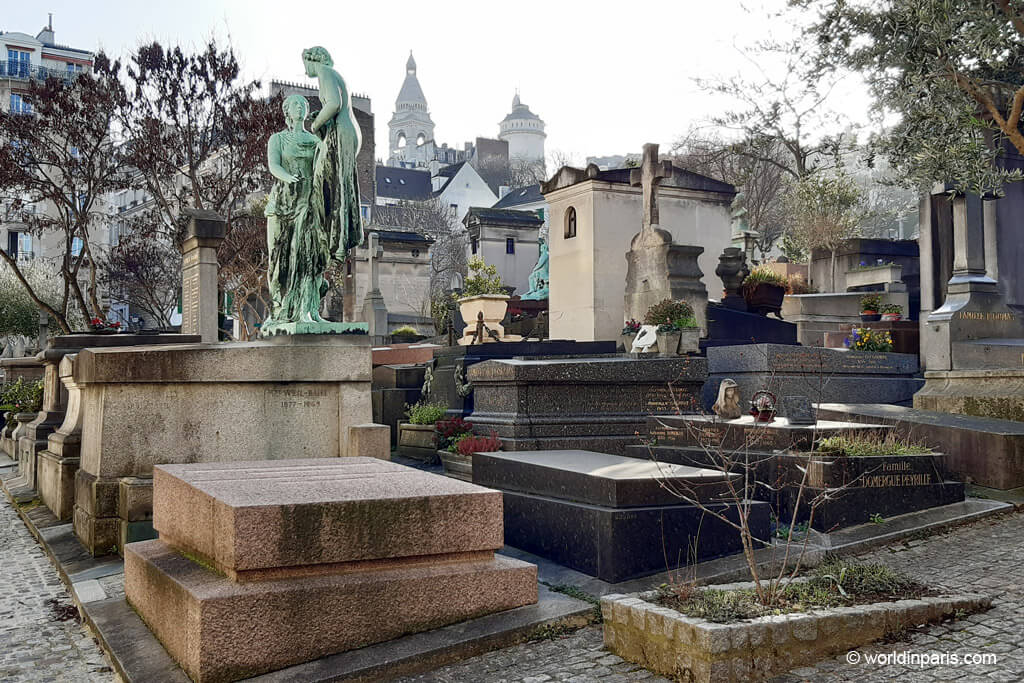
Le Cimitière Saint-Vincent is the second cemetery of Montmartre and the most Montmartrois of all, with a very special atmosphere. It opened in 1831 to replace the old Calvaire Cemetery, which was insufficient for the local population. Dedicated to Saint Vincent, the saint patron of the winegrowers, it is located a stone’s throw from the vineyards of Montmartre.
Despite being a lovely place, Saint-Vincent Cemetery has a few visitors. Most of the time, these visitors arrive here by chance.
Reserved for perpetual concessions, it is undoubtedly the most local of the Butte cemeteries since most of the people buried there have marked the neighborhood’s history. There are around 900 tombs of illustrious Montmartre families (Picard, Tourlaque, Labat, Muller, Roussard, etc.) and numerous artists who lived in Montmartre.
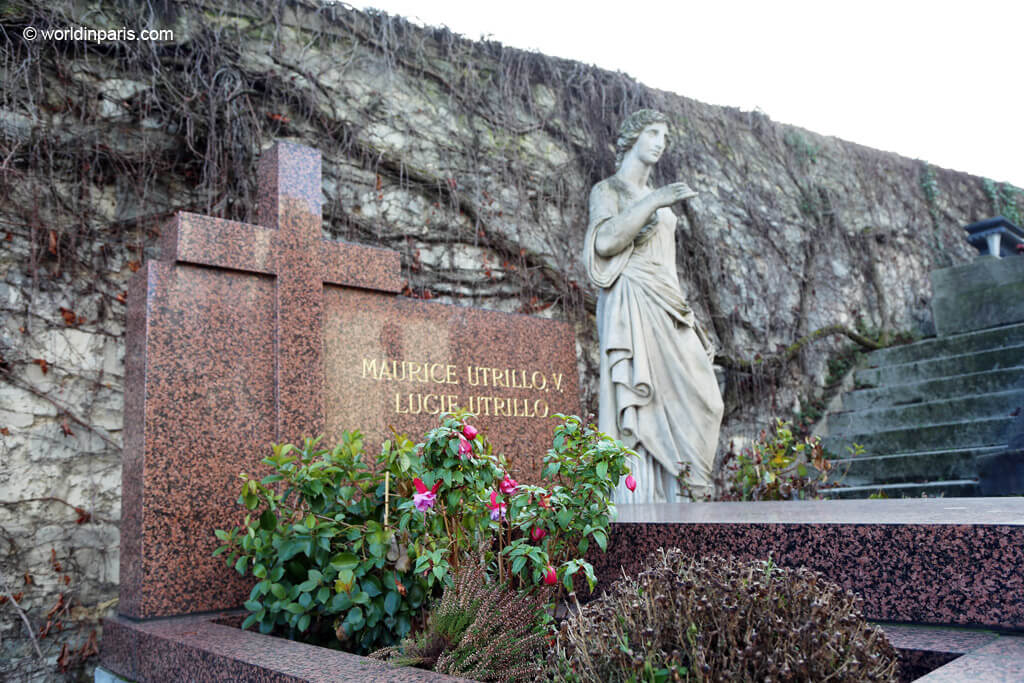
Perhaps the most famous artist buried here is Maurice Utrillo, born and raised in Montmartre. Behind the wall, there’s rue des Saules, the Le Lapin Agile Cabaret, the vines, and the pink house… so many places painted by the man who rests under this (quite sinister) marble forever.
15. Château des Lys
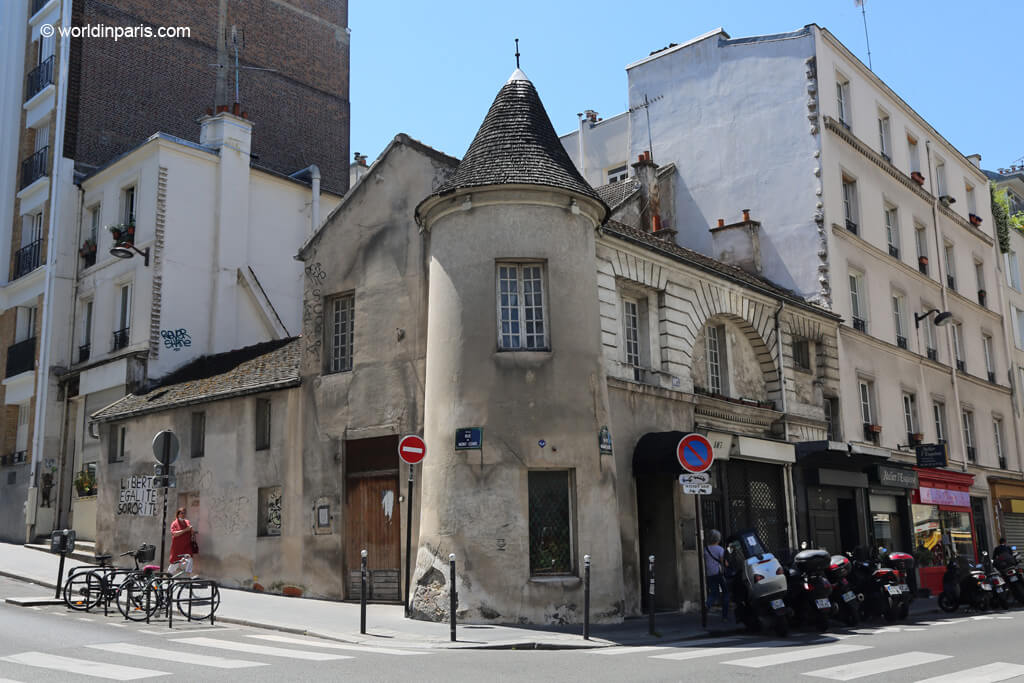
The last point of this secret map of Montmartre Paris is not really a castle, but the name of a libertine club with a more interesting past.
These are the remains of the 18th-century Clignancourt porcelain factory, a listed historical monument since 1965. The turret was used as a mill, and its grinding wheel reduced quartz, kaolin, and other ingredients necessary for the manufacture of porcelain paste. The first pieces produced had the mark of a blue or red stylized windmill (a symbol of Montmartre).
This curious turret has been immortalized on numerous occasions by painter Maurice Utrillo between 1911 and 1954. Address: 63 rue du Mont Saint-Cenis

